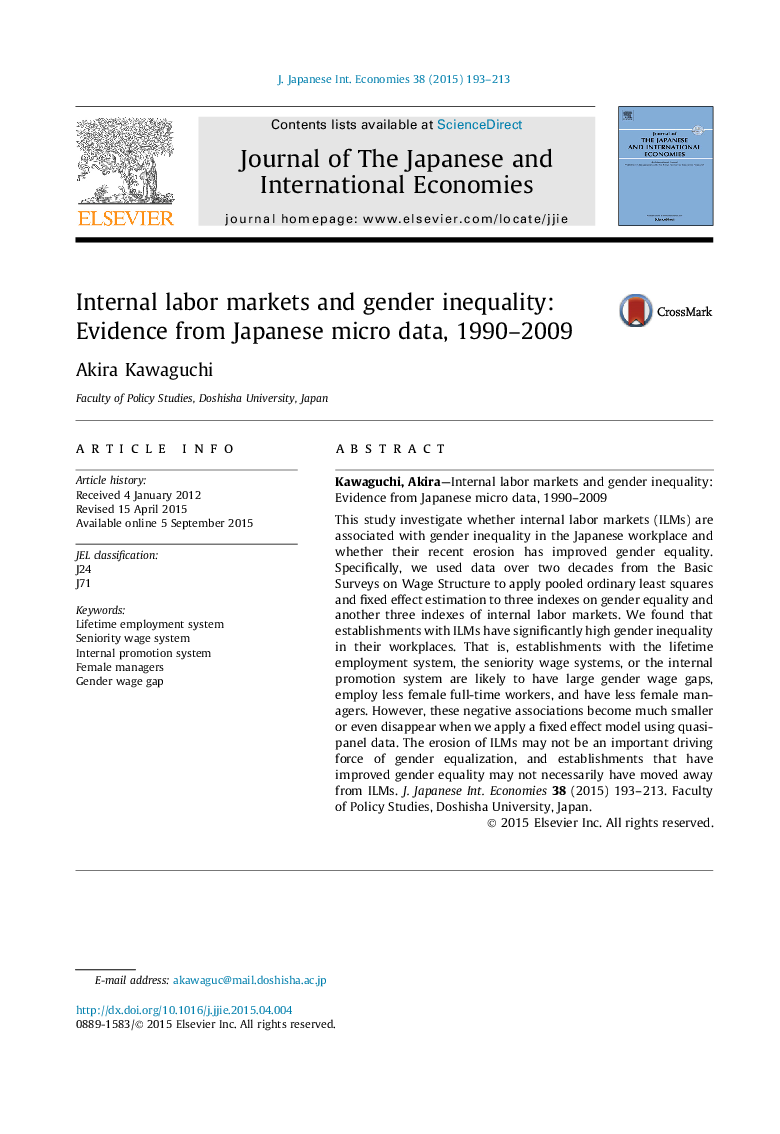| Article ID | Journal | Published Year | Pages | File Type |
|---|---|---|---|---|
| 965149 | Journal of the Japanese and International Economies | 2015 | 21 Pages |
Abstract
This study investigate whether internal labor markets (ILMs) are associated with gender inequality in the Japanese workplace and whether their recent erosion has improved gender equality. Specifically, we used data over two decades from the Basic Surveys on Wage Structure to apply pooled ordinary least squares and fixed effect estimation to three indexes on gender equality and another three indexes of internal labor markets. We found that establishments with ILMs have significantly high gender inequality in their workplaces. That is, establishments with the lifetime employment system, the seniority wage systems, or the internal promotion system are likely to have large gender wage gaps, employ less female full-time workers, and have less female managers. However, these negative associations become much smaller or even disappear when we apply a fixed effect model using quasi-panel data. The erosion of ILMs may not be an important driving force of gender equalization, and establishments that have improved gender equality may not necessarily have moved away from ILMs.
Keywords
Related Topics
Social Sciences and Humanities
Economics, Econometrics and Finance
Economics and Econometrics
Authors
Akira Kawaguchi,
